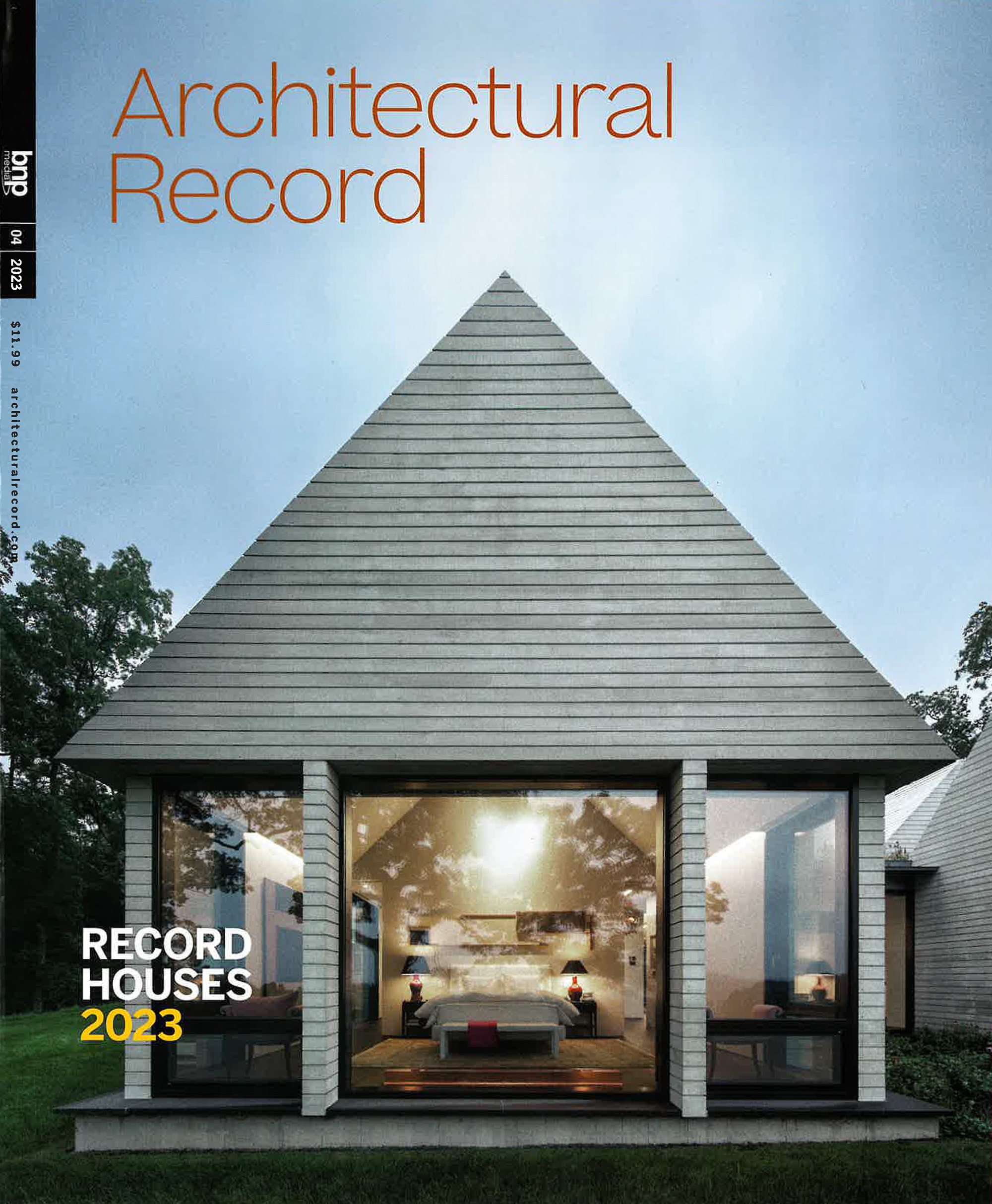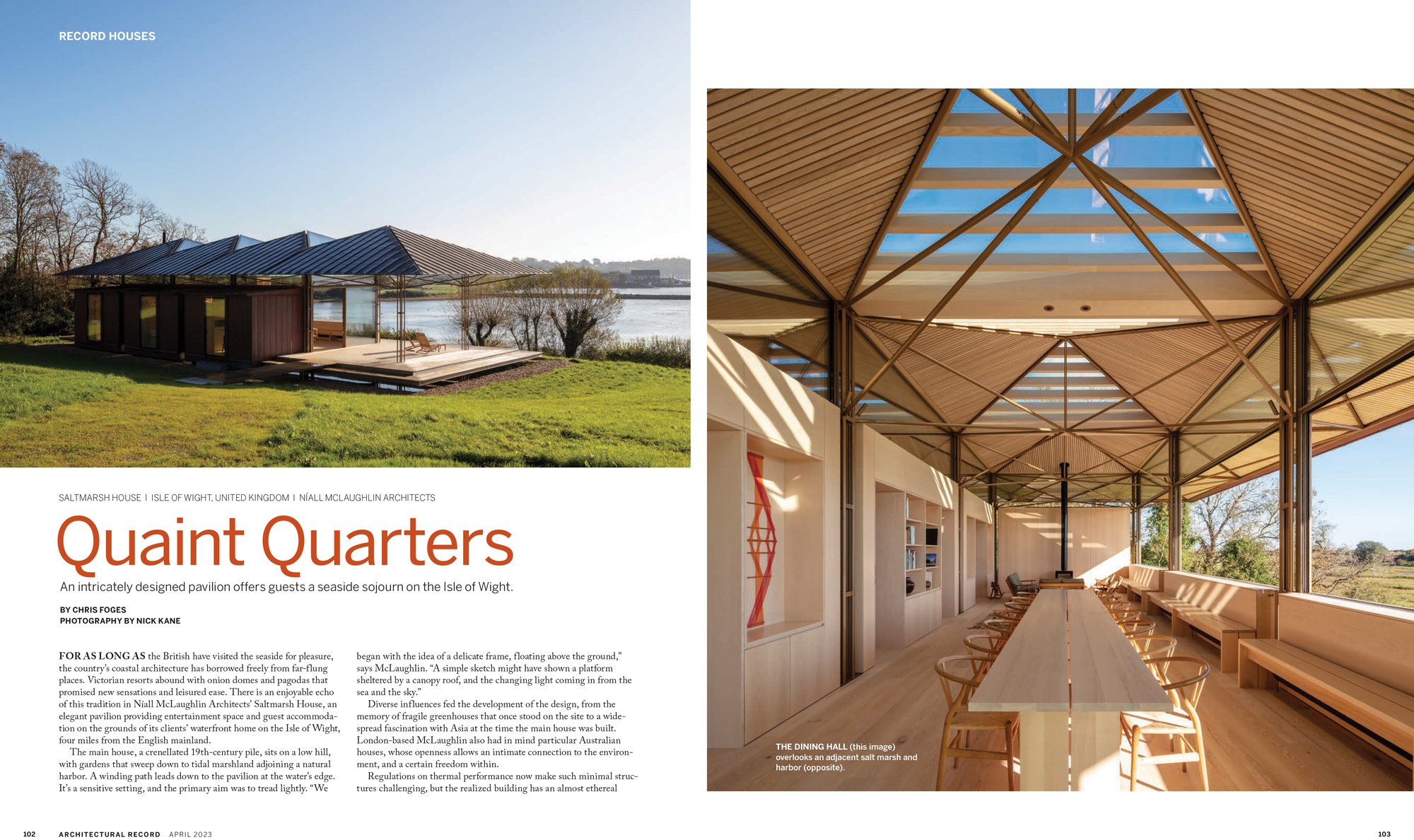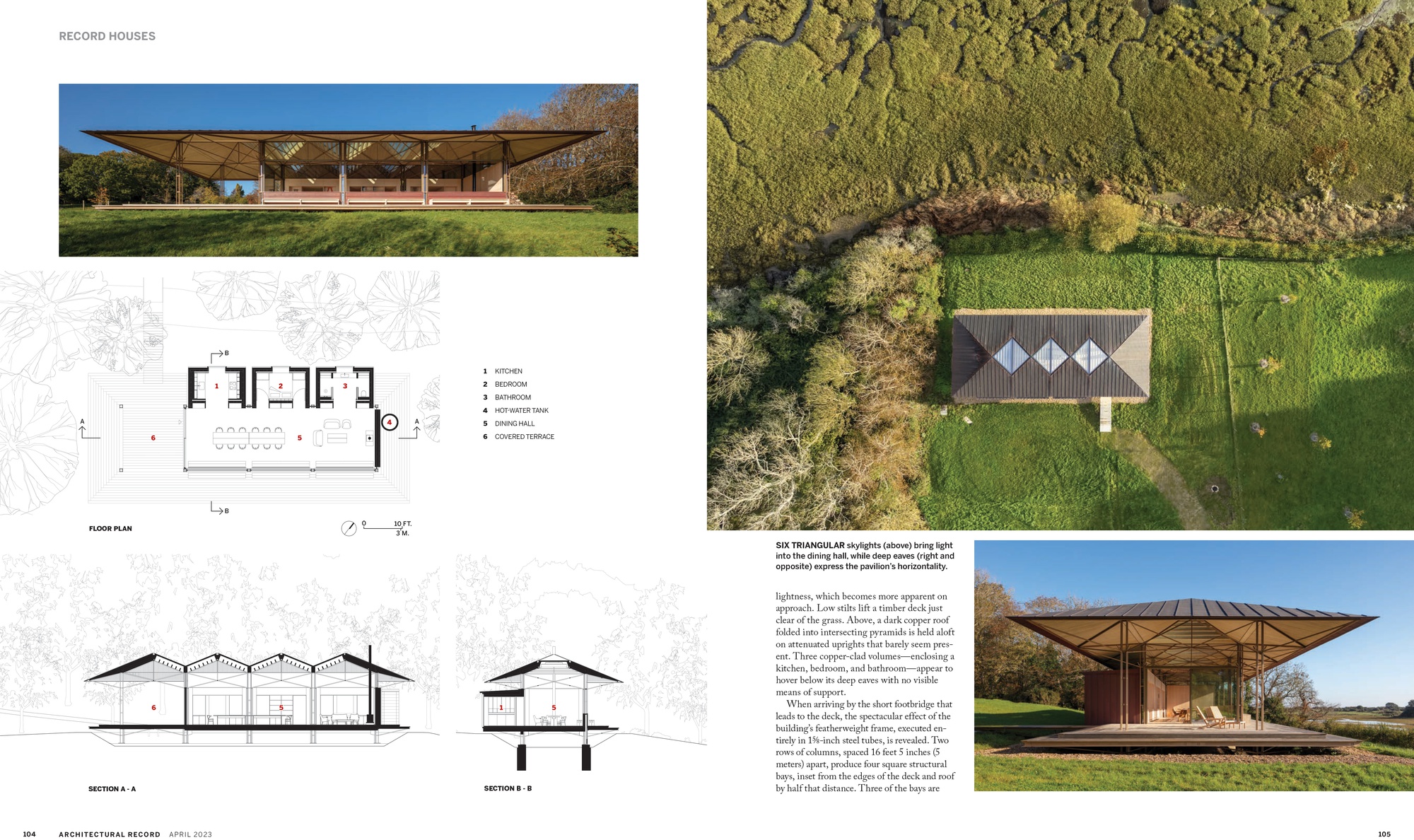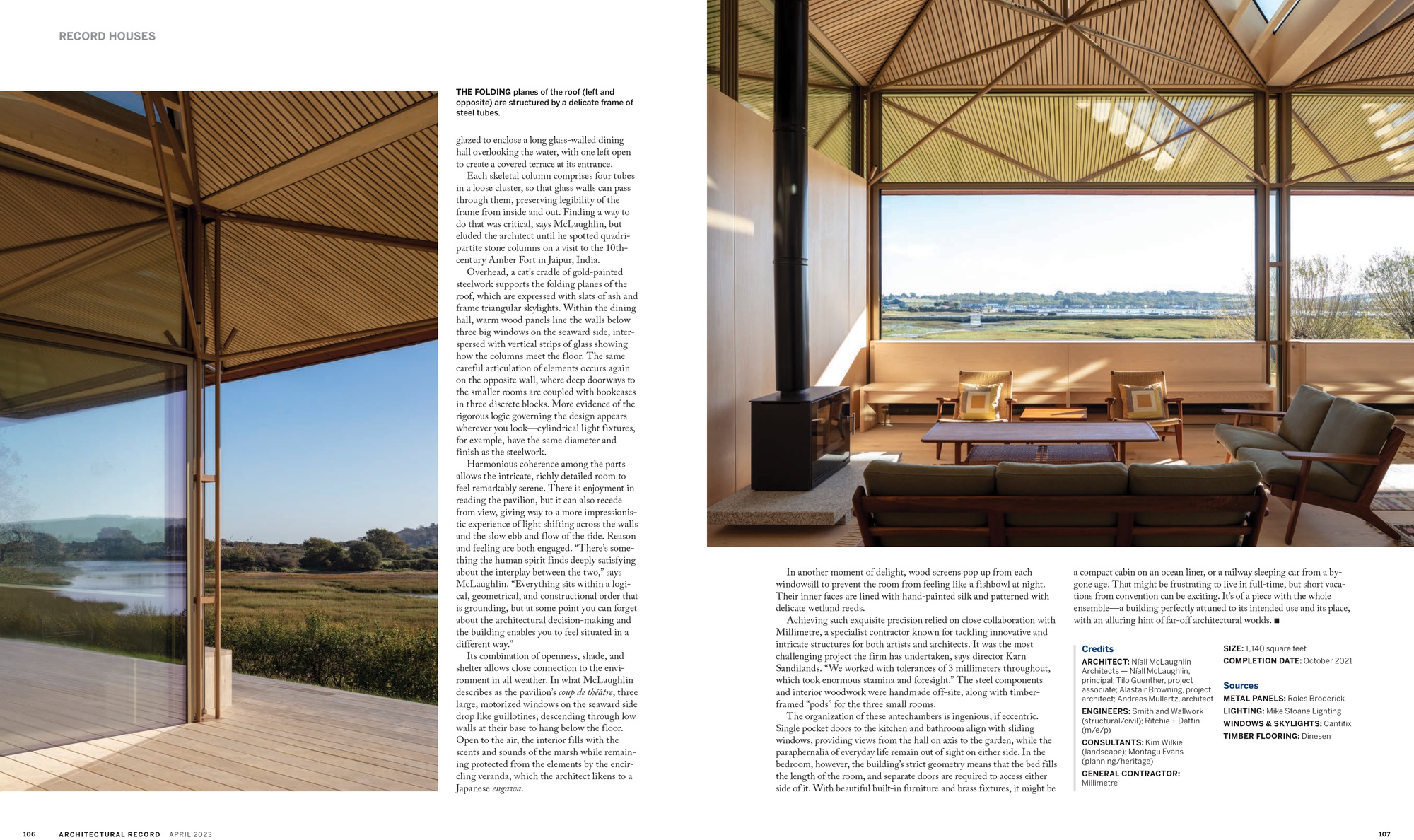Quaint Quarters - Architectural Record
April 2023
Text Chris Foges
Images Nick Kane
For as long as the British have visited the seaside for pleasure, the country’s coastal architecture has borrowed freely from far-flung places. Victorian resorts abound with onion domes and pagodas that promised new sensations and leisured ease. There is an enjoyable echo of this tradition in Níall McLaughlin Architects’ Saltmarsh House, an elegant pavilion providing entertainment space and guest accommoda- tion on the grounds of its clients’ waterfront home on the Isle of Wight, four miles from the English mainland.
The main house, a crenellated 19th-century pile, sits on a low hill, with gardens that sweep down to tidal marshland adjoining a natural harbor. A winding path leads down to the pavilion at the water’s edge. It’s a sensitive setting, and the primary aim was to tread lightly. “We began with the idea of a delicate frame, floating above the ground,” says McLaughlin. “A simple sketch might have shown a platform sheltered by a canopy roof, and the changing light coming in from the sea and the sky.”
Diverse influences fed the development of the design, from the memory of fragile greenhouses that once stood on the site to a wide- spread fascination with Asia at the time the main house was built. London-based McLaughlin also had in mind particular Australian houses, whose openness allows an intimate connection to the environment, and a certain freedom within.
Regulations on thermal performance now make such minimal structures challenging, but the realized building has an almost ethereal lightness, which becomes more apparent on approach. Low stilts lift a timber deck just clear of the grass. Above, a dark copper roof folded into intersecting pyramids is held aloft on attenuated uprights that barely seem present. Three copper-clad volumes—enclosing a kitchen, bedroom, and bathroom—appear to hover below its deep eaves with no visible means of support.
When arriving by the short footbridge that leads to the deck, the spectacular effect of the building’s featherweight frame, executed entirely in 15⁄8-inch steel tubes, is revealed. Two rows of columns, spaced 16 feet 5 inches (5 meters) apart, produce four square structural bays, inset from the edges of the deck and roof by half that distance. Three of the bays are glazed to enclose a long glass-walled dining hall overlooking the water, with one left open to create a covered terrace at its entrance.
Each skeletal column comprises four tubes in a loose cluster, so that glass walls can pass through them, preserving legibility of the frame from inside and out. Finding a way to do that was critical, says McLaughlin, but eluded the architect until he spotted quadripartite stone columns on a visit to the 10th- century Amber Fort in Jaipur, India.
Overhead, a cat’s cradle of gold-painted steelwork supports the folding planes of the roof, which are expressed with slats of ash and frame triangular skylights. Within the dining hall, warm wood panels line the walls below three big windows on the seaward side, inter- spersed with vertical strips of glass showing how the columns meet the floor. The same careful articulation of elements occurs again on the opposite wall, where deep doorways to the smaller rooms are coupled with bookcases in three discrete blocks. More evidence of the rigorous logic governing the design appears wherever you look—cylindrical light fixtures, for example, have the same diameter and finish as the steelwork.
Harmonious coherence among the parts allows the intricate, richly detailed room to feel remarkably serene. There is enjoyment in reading the pavilion, but it can also recede from view, giving way to a more impressionis- tic experience of light shifting across the walls and the slow ebb and flow of the tide. Reason and feeling are both engaged. “There’s something the human spirit finds deeply satisfying about the interplay between the two,” says McLaughlin. “Everything sits within a logical, geometrical, and constructional order that is grounding, but at some point you can forget about the architectural decision-making and the building enables you to feel situated in a different way.”
Its combination of openness, shade, and shelter allows close connection to the environment in all weather. In what McLaughlin describes as the pavilion’s coup de théâtre, three large, motorized windows on the seaward side drop like guillotines, descending through low walls at their base to hang below the floor. Open to the air, the interior fills with the scents and sounds of the marsh while remaining protected from the elements by the encircling veranda, which the architect likens to a Japanese engawa.
Download the article here.
Visit the Architectural Record website article here.



